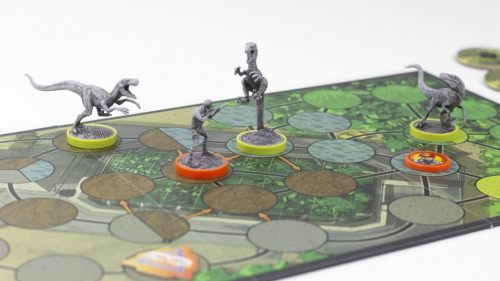Board Game Review: ONIRIM
Not to brag, but I am doing this quarantine totally alone. No people, no dogs, no cats… just me. It’s not so bad. Just kidding, it’s actually horrible, but you have to stay optimistic.
In all that solitude, you’d think board games are out. But that doesn’t necessarily have to be the case. While games like this traditionally require a number of folks to play, it’s almost their entire point, there are some games out there designed to be played solo. It makes some sense, right? Most video games are one-player. Why not board games as well?
Well, I have one reason: they are sort of depressing. I’ve played a couple of these, and something about them seems to heighten my sense of loneliness. I can’t help but feel a bit like a death row inmate playing Solitaire while they measure a rope. Personally, I feel solo board games are a good thing to have as a last resort, one of the final items on a list of ways to alleviate boredom. For some reason - and this is going to sound crazy - it is much more appealing to take a multiplayer game and pretend you are multiple people. It doesn’t work with every game, but I’ve played BIG TROUBLE IN LITTLE CHINA and HORRIFIED like this and had a pretty good time.
That’s not what I’m doing today. Today I am playing ONIRIM. And despite the negative things I said above about single player games in general, ONIRIM has a lot to offer, especially if you’re stuck in a situation where ONIRIM is the only thing between you and insanity.
And I don’t think you’ll ever get totally bored with ONIRIM. The version I have came with seven different expansions, each with unique cards and complicated unique rules. I’m only going to discuss the base game here, as I just don’t have the juice to write basically eight game reviews in one. Chance are, however, that after learning the base game and exploring all these variants on it, you’ll find one that really hits your sweet spot. And if you don’t, you’ll still spend a hell of a lot of time trying.
As for the game itself, you start with a fat deck of cards. Eight are “doors”, ten are “nightmares”, fifty-eight are “locations”. Locations and doors come in four different colors. Nightmares don’t give a shit about color. Locations are also marked with one of three symbols: a moon, a sun, or a key.
Deal yourself five cards and get to work. Oh whoops, did you draw a door? Put it aside. Did you draw a nightmare? Put it aside too. You want to start with five locations. Once you have them, shuffle the dream(s) and door(s) back into the deck. You will shuffle a lot in this game.
One by one, your task is to lay cards down in a horizontal line (this is called the labyrinth) so you can always see the cards that came before. You want three of the same color. The trick is you can never play the same symbol twice in a row. Moon, sun, moon is fine; sun, moon, moon is not. When you get three, you get that color’s door. Get all eight doors and you win the game. Run out of cards and you lose.

(Pictured above is a game I was certain to win and then lost at the last moment.)
The problem is your deck has ten nightmares, and nightmares screw everything up. If you draw one you have to either dump your whole hand, dump the next five cards in your draw deck, or use a precious key. No matter how often I shuffle, nightmares seem to come at me in groups and totally ravage whatever lucky streak I was on. Every time you take a card out of your hand (discard or labyrinth) you must refill. And those bastards always pop up when you least want them to.
A lot of times, you just have to grin and bear it. But there are ways to be proactive, particularly with keys. There aren’t many of them, but keys are everything in this game. If you have a key in your hand and happen to draw that color’s door, boom: you automatically get that door. Keys get rid of nightmares. Keys can also be used just as a regular location card in the labyrinth. But most importantly, keys can buy you a prophecy.
It took me a while to realize how powerful these prophecies are. At first I ignored them in favor of hoarding keys. Give up one key and you can look at your next five cards, discard one, and then put the remaining four back in whatever order you please. It’s not so crazy to do a prophesy and use it to both discard a nightmare AND set yourself up for a brand new door, easy peasy. You just have to be proactive with prophecies. And, of course, be willing to give up a key.
I found I won ONIRIM about as much as I lost. Like I said above, I have to exhaust a number of entertainment avenues before I arrive at solo board-gaming, but once I get started on ONIRIM, I do find it difficult to quit. Win or lose, I’m usually pretty eager to start a new game, which is just a shuffle away.
If that sounds interesting, definitely check ONIRIM out. I also recommend another solo card game called FRIDAY, which I’ve played but do not currently own. I think FRIDAY is a bit more fun thematically but also more difficult, though I have also played it way less than I’ve played ONIRIM. In any case, sometimes it is good to give the television a break and mess around with physical objects, even if they are just cards. Having said that, there is also an ONIRIM app out there that is really quite nice. I find board game apps are a cheap way to learn how a game works while helping you decide if you even want to invest in the real deal. And obviously, they are particularly well suited to a solo game like this.



